Last weekend, for the first time, I went to Rhinebeck (a.k.a. The New York State Sheep and Wool Festival). I am not a high-speed driver and I always take back roads, so via my route it was a three hour drive to get there. Two of those three hours involved a nerve-wracking creep through the foggy pre-dawn darkness, praying to St. Francis to keep all the small creatures away from my car. The last hour involved intense gratitude for the sunlight, eager glimpses of glorious foliage, and sorrow for the poor wee beasties on whose behalf, apparently, crepuscular New York drivers had neglected to invoke any animal protector.
The last twenty minutes of the trip were a total panic because I hit the fairgrounds and came to a screeching halt. The traffic lines were absurd. It was just as much of a mob scene as I had been led to believe, except I hadn’t believed it. Once I finally parked I still had to figure out where Building D was, and then I had to get there. Thankfully, two awesome women helped me avoid the mile-long line and find the building. I was so grateful. In the end I was only five minutes late.
Five minutes late to what?
Good question. Despite my overall fibrous lifestyle, I would not normally have gone to Rhinebeck. I would have stayed home and planted garlic. I do not enjoy crowds or long drives. Plus, I have a closetful of uncarded, unspun fleece, both dyed and undyed…. I do not, in fact, need any wool. Or sheep.
However, this year was my opportunity to meet and learn from the fabulous flax-duo of Johannes and Christian Zinzendorf, and I was not going to pass that up! So, months ago I signed up for their workshop on processing flax, along with two other folks from my beloved, inspiring flax and linen study group.
Christian and Johannes were just as charming and funny in person as they are in their YouTube videos. Their presentation was full of many helpful insights and ideas for further exploration. For example, I had never before considered that successful dew-retting might depend on a certain population of micro-organisms in the soil where you lay out the straw, and that some locations just might not work for dew-retting. I appreciated their humor about learning through trial and error (with lots of errors). They are a truly inspirational model of learning from direct experience (as well as from all the travel and research they have done). You can check out their websites here and here.
We also had a well-informed and thoughtful group of participants, which was a pleasure.
During the workshop I appreciated the shared joy and delight in flax’s unique character and beauty. Its strength and sheen. The range of colors the fiber takes on due to innumerable factors: weather; soil composition; retting process; locally available minerals, bacteria and fungi; water chemistry…. Not to mention the skill of the grower, dresser, spinner, and weaver. The effect that different cultivation practices, tools, and techniques all have on the cloth that is ultimately created.
What I appreciated the most was a sense of comradeship regarding the tribulations attendant upon a flax obsession. Months of hard work wasted by over-retting. Yes! Other people can feel my pain. Close encounters with snakes and rats? Luckily I have only had problems with chipmunks thus far, but it’s good to be forewarned. Oh, that smell? Does that bother you? It’s just my flax…. There are other people who are willing to tolerate all that for the sake of the flax. I am not alone.
I often find my flax obsession hard to explain, to myself and to others. I prefer to think of it as a lofty, muse-like, or even divine inspiration. But I sometimes wonder whether the bacteria involved in flax retting could possibly be colonizing my brain and controlling my behavior. This is not crazy-talk. Many parasites affect their hosts’ behavior. Could it be true of flax? The more I learn how to grow and process flax, the more I am mysteriously motivated to grow and process even more, to learn all its finicky ways, to acquire ever more seed varieties, to impose upon my farming neighbors for additional land upon which to grow the crop and barns to store it in, and to annoy my loved ones and neighbors with its retting stench….
OK, there is way more to say about the workshop and how it inspired me than I can actually express. But if you are not infected with flax bacteria, you are maybe getting bored. So here are the photos!
I must post a disclaimer, which is that I am not in any way an antiques expert. Please excuse any errors that may follow.
Christian breaking flax on a “French” brake. Behind is the “English” I believe.
See how the bundle has more drape after the woody part of the stalks are smashed up:
Scutching with German tools, I believe. Behind are the Swedish:
Below, observe how much more fluffy and smooth the fiber is after scutching:
Below: hetcheling, hackling, or combing, using a coarse tool.
Finer tools can subsequently be used, if the fiber warrants it. Here is Christian using a finer comb/hetchel/hackle:
Also, above, note the elegant flax stricks hanging from a hook below the bench. Luminous.
Below, Johannes preparing a distaff for spinning.
Spinning flax into linen off of the distaff.

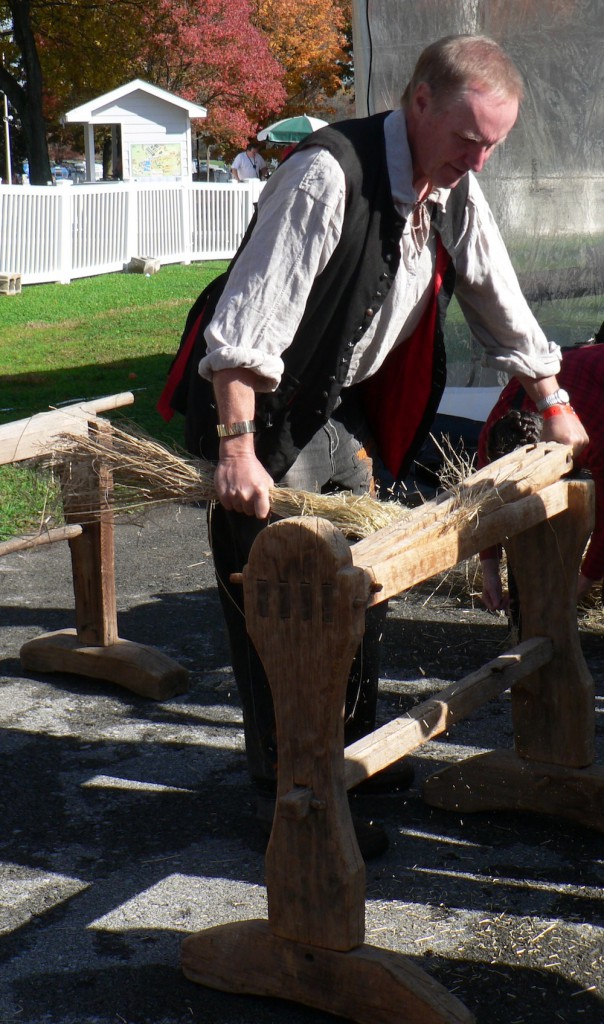
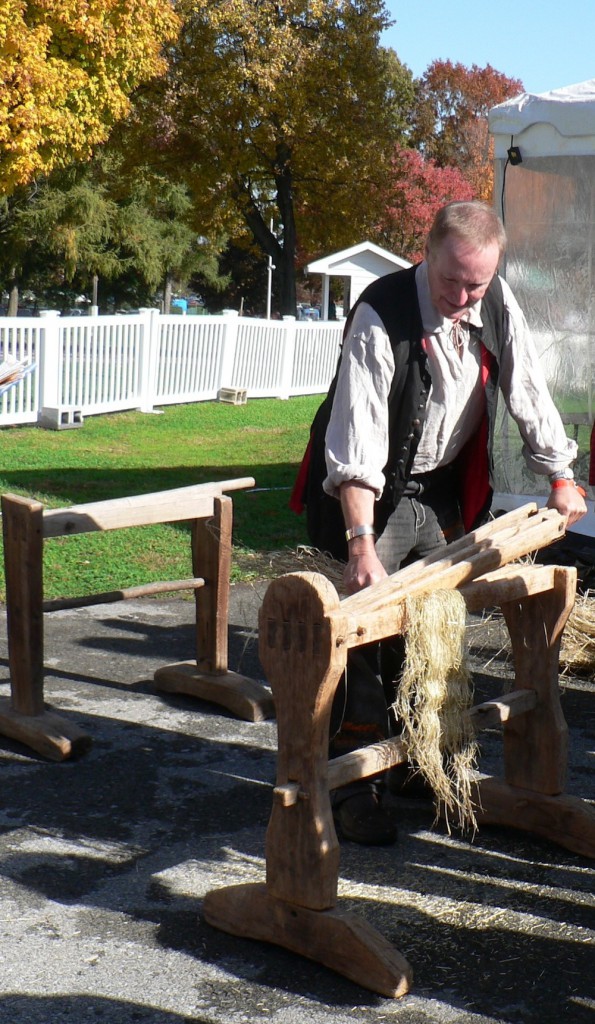
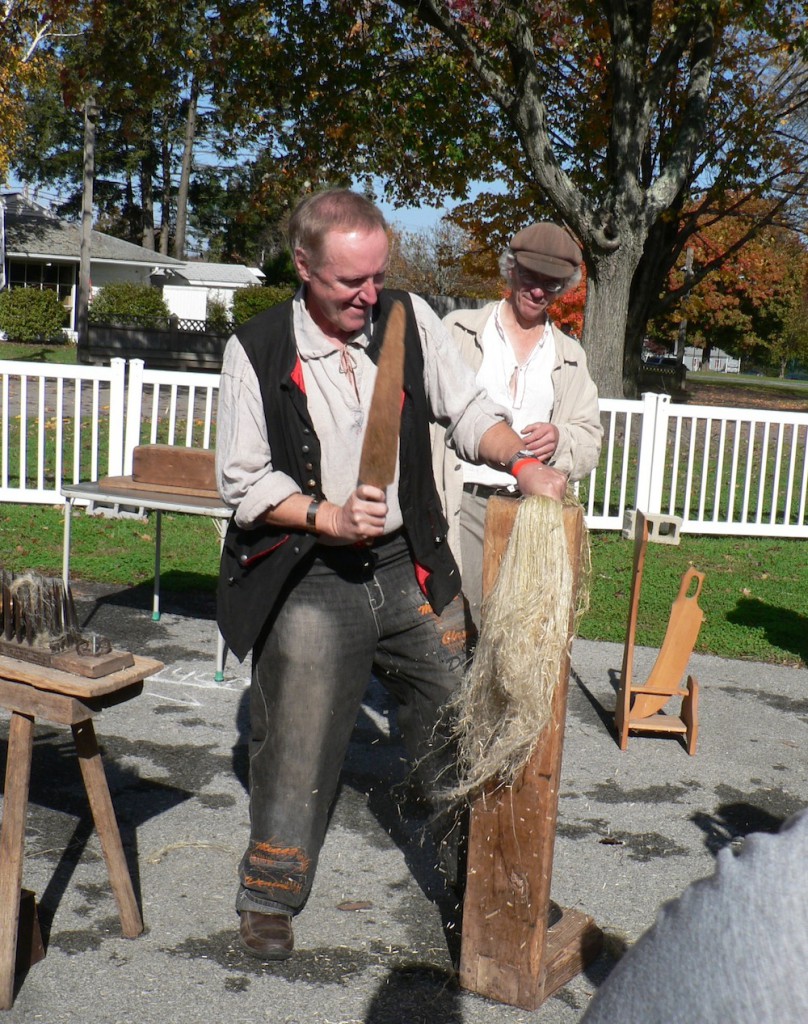
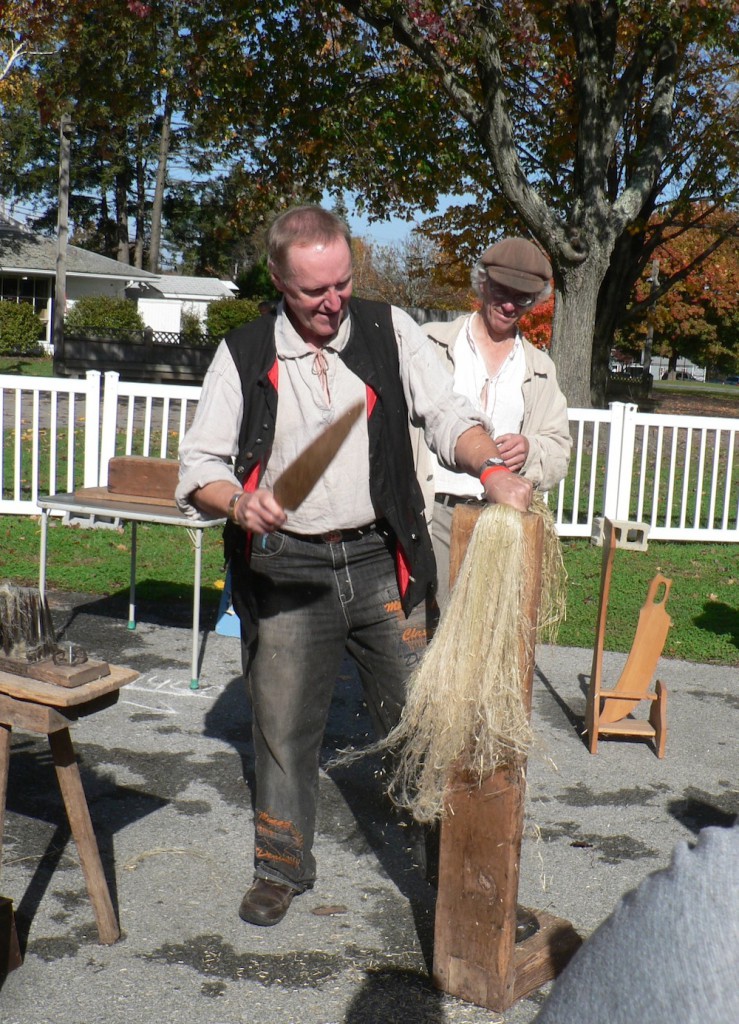
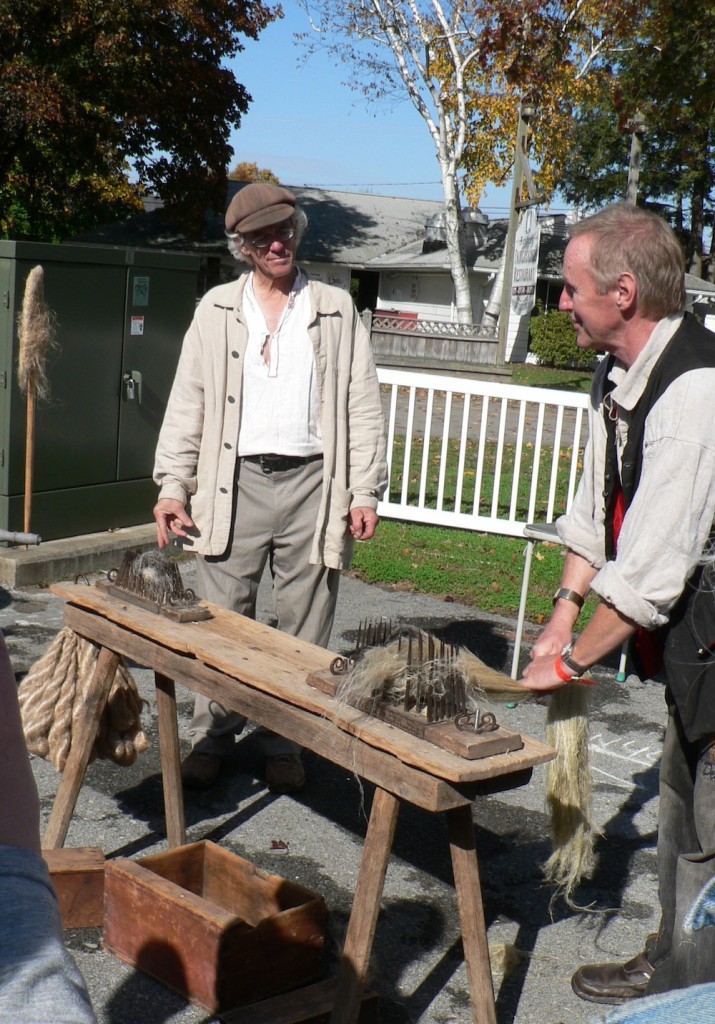
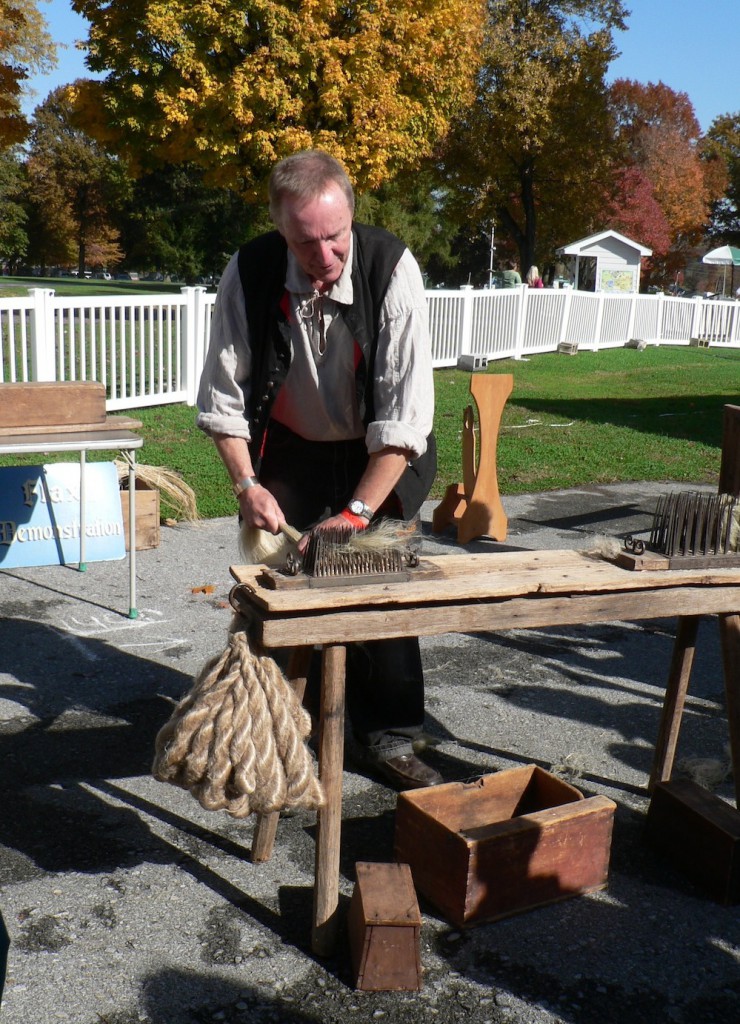
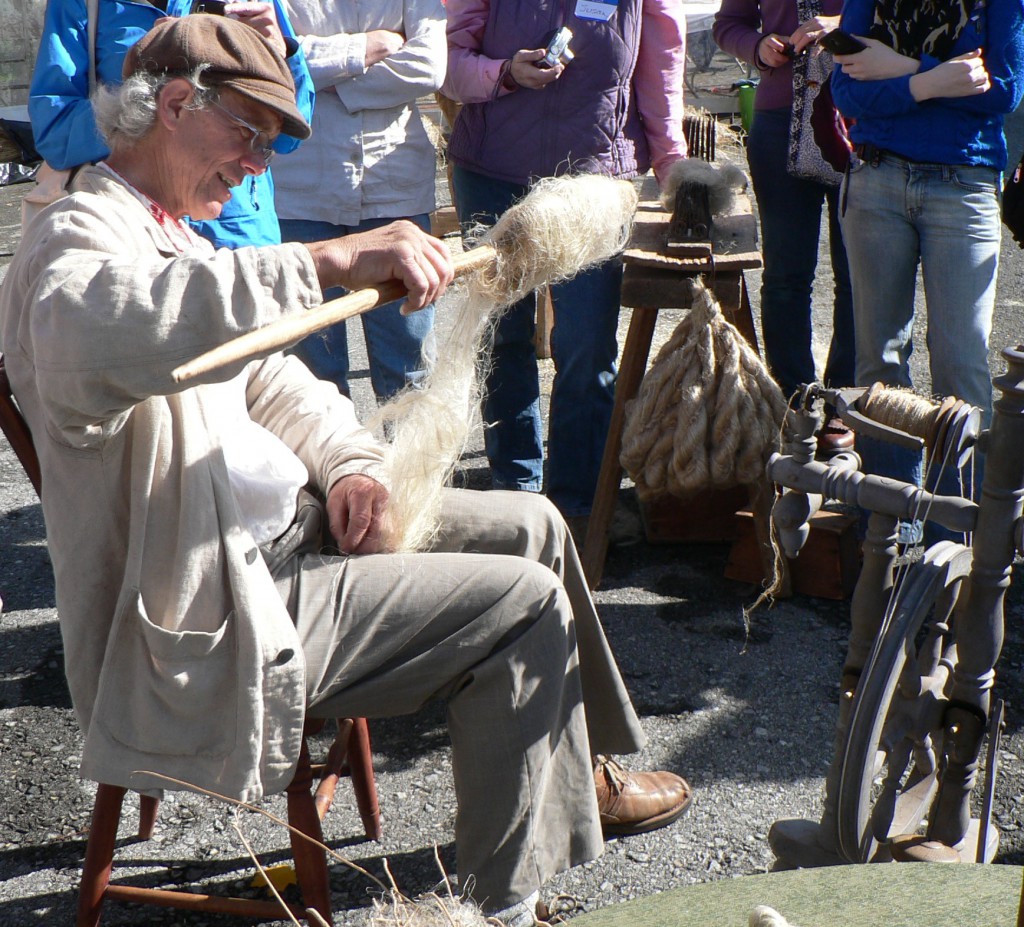
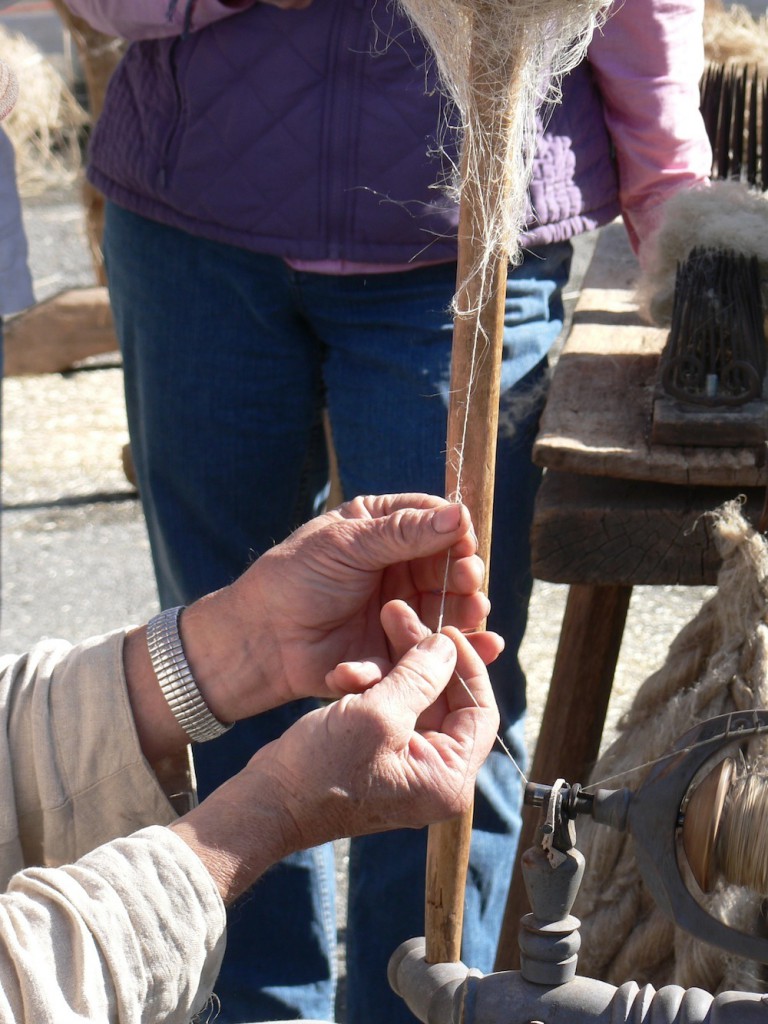
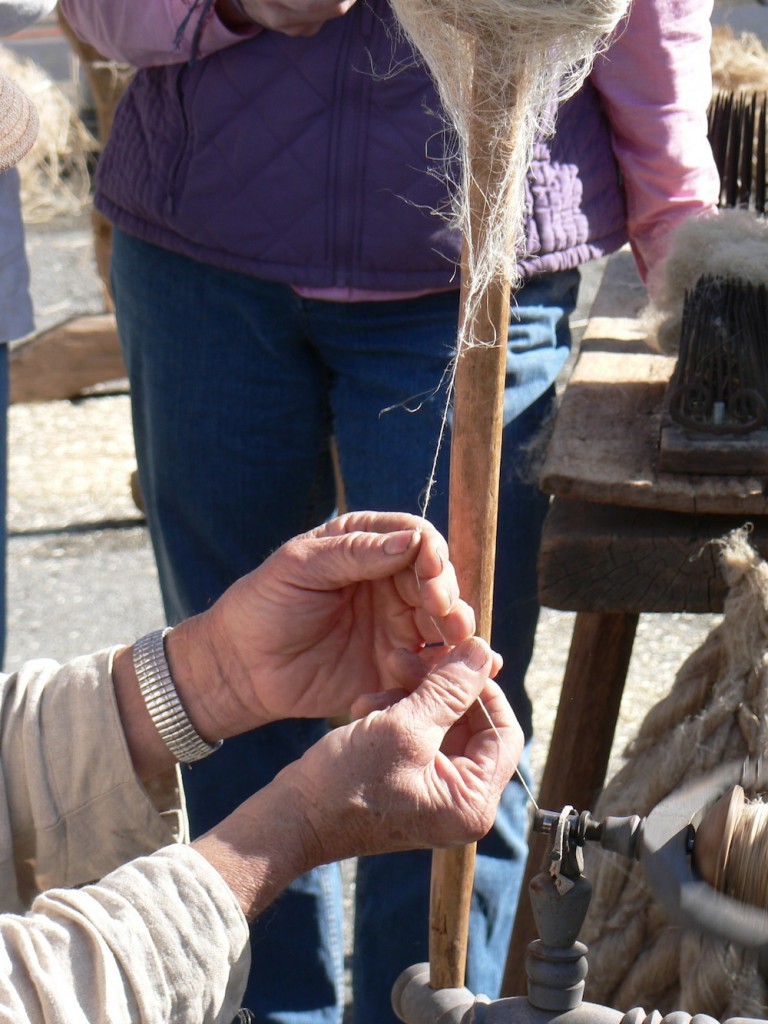
One thought on “Rhinebeck and the Brothers Zinzendorf”
Comments are closed.